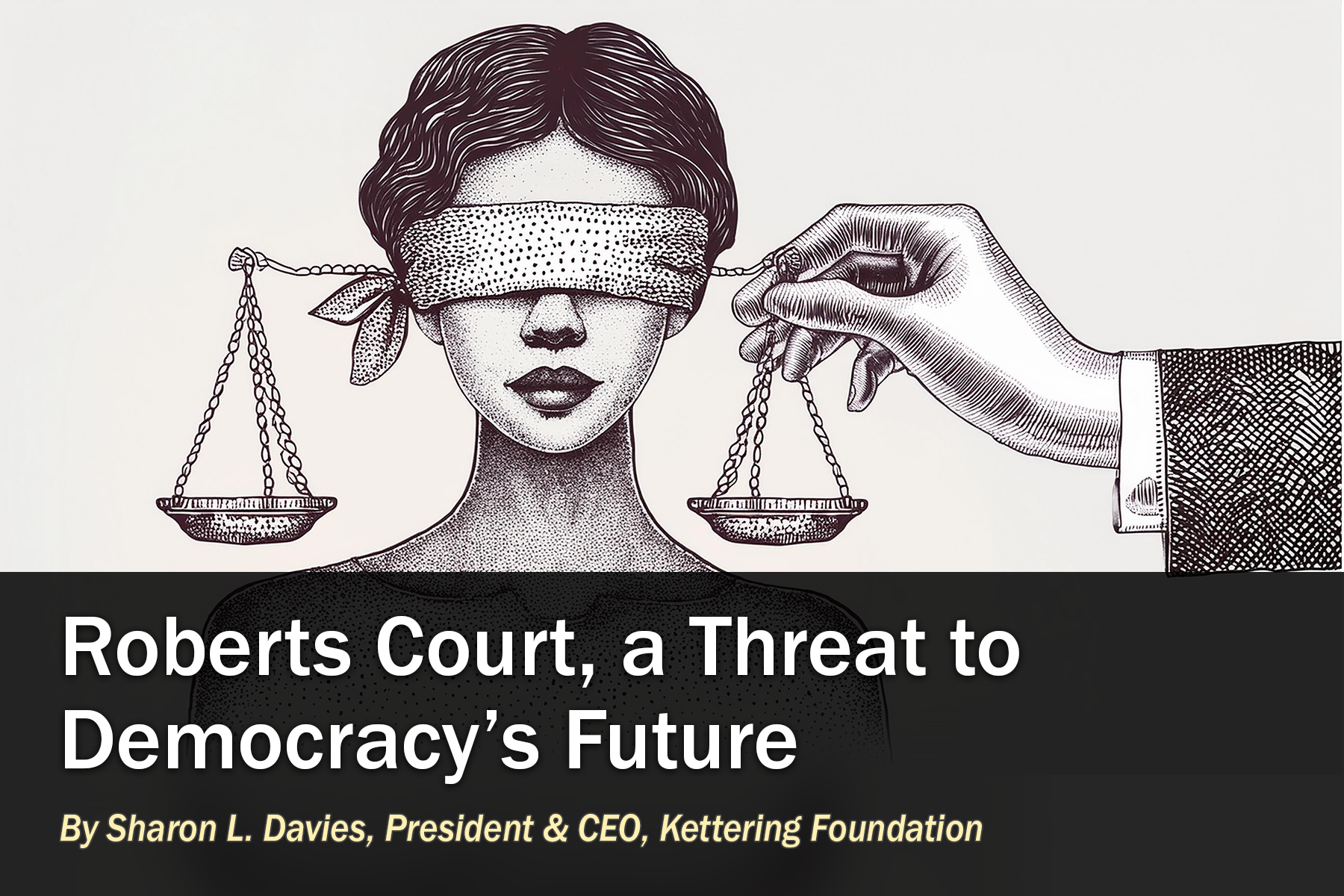A Few Thoughts on Democracy in a Time of Fear and Violence

Sharon Davies made these remarks to the Kettering Foundation staff and network of associates on May 18, during her second Dayton Days meeting as president and CEO of the Kettering Foundation.
From time to time, things happen in our communities or our country that require us to think about their significance to our democracy and more fundamentally to our humanity—and what we owe each other as fellow human beings.
On May 14, the nation witnessed another horrific mass shooting event in the city of Buffalo, where an American teenager took an assault weapon into a grocery store and killed as many Black people as he could—all strangers to him, all people of good will, none of whom had trespassed in any way against him. It appears that the motive was racial hatred at the young age of 18.
At the Kettering Foundation, we focus on the role that citizens play in the project of self-governance and the health of our democracy. And although I have been in the role of Kettering’s president for just over six weeks, I think it is important to acknowledge and take stock of such moments because failing to do so might unwittingly convey the message that they are not relevant to our work. Race-driven conduct is deeply rooted in our history, and it puts our democracy at risk.
If our project here at Kettering is to increase the strength of public democracy—the sovereign power of citizens—we may first have to acknowledge that civic power is unevenly located. Some citizens wield a great deal of power and influence in our communities, while others struggle for it. Leveling that field remains our work.
It is undoubtedly easier to see that differential in citizen power when we look back in time. None of us would question that at our nation’s founding, civic power was reserved for a very narrow segment of society—white men of property—and denied to all others. That changed over time, happily, but it did not change without demand and struggle; it did not change without resistance and even violence.
That history, our history, provides important context for where we are today. We are its legacy, and our communities are its modern-day canvas.
When my family and I moved to Ohio in 1995, we found an artifact of a different form of citizen-action that had been designed to preserve the power and privileges of some while denying it to others. It did not involve a voting restriction or an act of violence, but it was equally potent. When looking for a place to live, we settled on a house in a quiet, tree-lined neighborhood in the state’s capital, with lovely sidewalks and well-kept lawns. I later learned that just adjacent to this neighborhood was a very different one, visibly more run down, a redlined area where the Black community had historically resided. Before the closing, our lawyer informed us that the deed to the house we wanted to buy contained a restrictive covenant. It was no longer enforceable in 1995, he assured us, but nevertheless, the compact remained, inked into the pages of the deed, like a cancer. I have since reflected on the lingering impact of the agreement reached by that group of like-minded citizens: the determination that no house of theirs would ever be sold to a Black person or anyone descended from a Black person. That it would never be sold to me. My husband (at the time) wanted the language removed, but I was of two minds, for the racial insult would be more capable of denying if physically erased. Far better to be able to point to it—at it—when trying to understand how our neighborhoods still look the way they do.
We are living in an era of contention over how our history should be taught and an era of fear of a changing citizenry. At such times, we require courage to ask ourselves the hard questions. Have we truly conquered the antidemocratic impulses that cabined civic freedom, power, and influence in our past? Or must we pay more attention to creating the conditions in which all citizens can participate in the project of self-governance, as civic equals?







